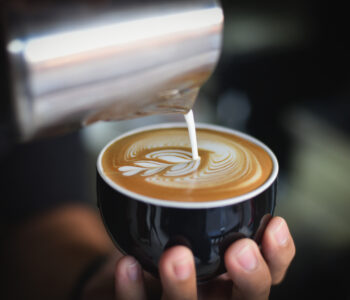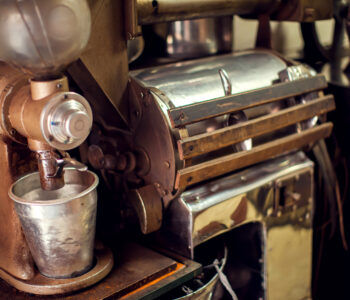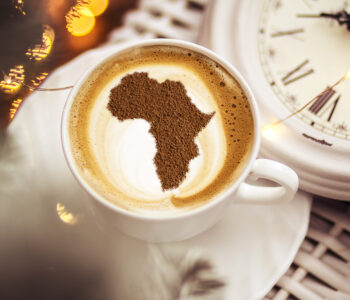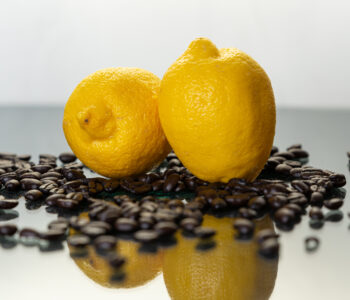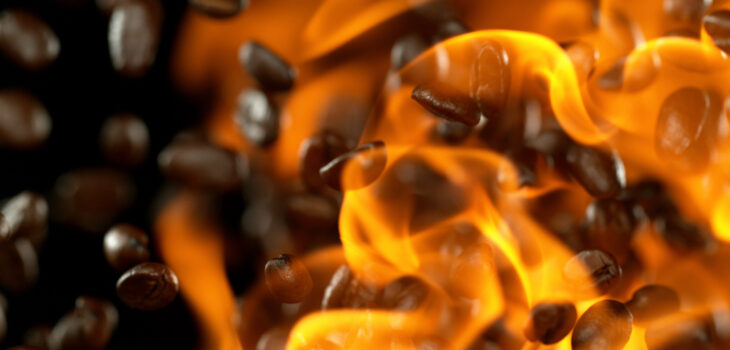 coffee knowledge
coffee knowledge
Is my espresso burnt?
You hear this question again and again. But what is the reason for this phenomenon and how can you counteract it?
Whether you know where the problem comes from or not, one thing is certain: when you are confronted with this question, the coffee tastes very bitter and the assumption that it is burnt is therefore very obvious. However, there is no actual burning of the coffee during the brewing process. What takes place here is an over-extraction.
There are two ways to recognize an overextraction. The most obvious is an excessively bitter taste and a very dry finish. Furthermore, such espressos often taste watery and flat. The second way to tell that the coffee has been over-extracted is the appearance of the finished beverage. In this case, the crema becomes very thin, sometimes downright “brittle” and has a much darker color than usual. The standard recipe for a successful espresso calls for a water-to-coffee ratio of 1:2. Put simply, if you brew your espresso with 18g of coffee in the portafilter, you should have about 36g of finished espresso in the cup. Of course, this is not set in stone and can also vary depending on your taste.
The ratio mentioned above is called the “Brew Ratio”. The term will become important again in a moment.
Now, I’d like to start by dividing the extraction into three stages to make the over-extraction a little easier to understand:
In the first stage, the espresso has a syrupy consistency and brings with it a lot of acidity, as well as fruity flavors. In the second phase, the coffee acquires what is called “body”. It is mainly oils and full-bodied flavors that show up now. This phase is mainly responsible for the typical coffee taste. In the last eight to ten seconds, the beverage becomes somewhat thinner and the crema forms. Now the hot water dissolves some of the bitter substances in the beans.
These bitter notes can be desired up to a certain point and perceived as pleasant. However, if the last phase is too long, i.e. if the espresso is not finished in time, it will be over-extracted and thus unpleasantly bitter. You then end up with a ratio of 1:3, for example, which means that the amount of hot water was simply too large for the amount of coffee selected. As described above, the standard recipe speaks of a ratio of 1:2.
Here we have the first cause of over-extraction: a brew ratio that is too large.
By the way: A good exercise to taste and understand the different phases of the extraction is the so-called “Salami Shot”. I will explain this to you another time.
So how do you solve this problem?
The goal in such a case is to reduce the brew ratio. You have to decide whether to end the brewing process earlier, i.e. have less beverage in the cup, or start with more coffee in the portafilter. From my experience, the easiest way is to leave the amount of ground coffee in the portafilter unchanged and adjust the amount of water. A simple example: Let’s say you had 12g of ground coffee in the portafilter up to now and 40g of the brown gold in the cup at the end, then we have a ratio of 1:3.33. If you want to get closer to the standard recipe, it makes sense to stop brewing after about 24g of espresso. You have now reached a ratio of 1:2. If you still notice unpleasant bitter notes, you can now use a little more ground coffee. This will make the brew ratio a little smaller, but the last unwanted bitter notes will also disappear.
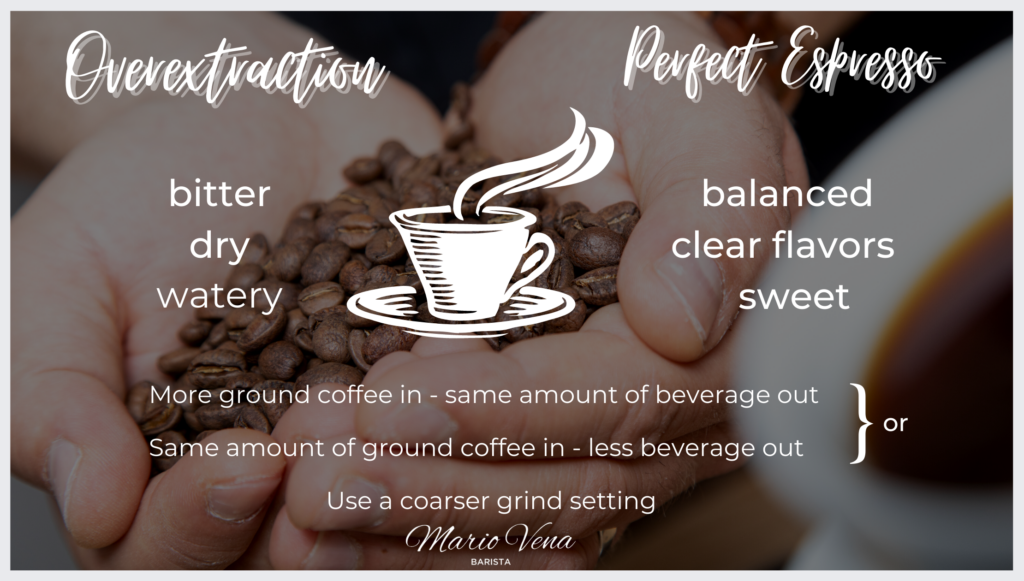
Here is a little advice: If you are not sure about the amount of coffee thats required for your filter basket, look at the side, there is very often written for how many grams this is suitable. In the worst case, you can also ask the manufacturer or maybe you even know a coffee geek in your area.
IS THE BREW TIME TO LONG – YOU GROUND TOO FINE
Another reason for over-extracted, bitter espresso is too long contact time between water and coffee during the brewing process. This happens when you have ground your espresso too finely. Too finely ground means that the water experiences more resistance on its way into the cup and is therefore in contact with the coffee grounds for longer. The longer then the contact time, the more is extracted or the further the extraction progresses. And we now know that at the end of it, the bitter substances find their way into the cup. The whole thing is recognizable by the very slow dripping of the coffee out of the machine. The espresso is very dark, syrupy and drips very slowly. This problem can be easily addressed by adjusting the grind to a coarser grind. But be very careful when adjusting the grind and do the whole thing in as small steps as possible. You will be surprised how big the difference can be even with only small corrections.
WHAT ABOUT THE WATER TEMPERATURE?
Well, water temperature is also one of the many variables when it comes to brewing espresso. The hotter the water – the more power it has in extraction. If the grind is set correctly, the dosage is optimal, but the espresso is still bitter, then take a closer look at the water temperature. As a rule of thumb, the darker the roast, the lower the temperature. It is important to know that the roasting of the coffee bean causes the cell structure to break down more and more as the degree of roasting increases. This means that it becomes easier for the hot water to dissolve the ingredients from the coffee. The darker the roast, the easier it is for the water to extract. Conversely, this also means that water does not have to be extremely hot. Often, 90°C is sufficient for a very dark roast. With lighter roasts, you can go up to about 96°C.
I hope to have helped you with this article.
If you have any further questions, just drop me a comment or send me an email.

